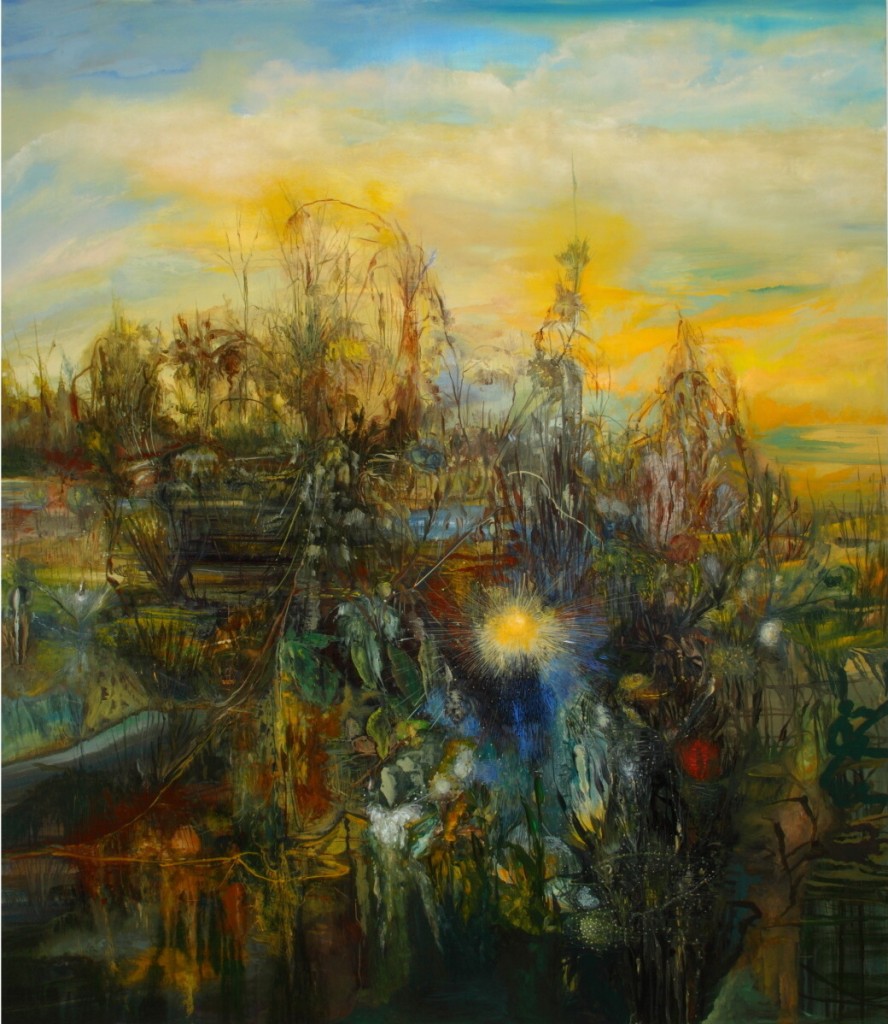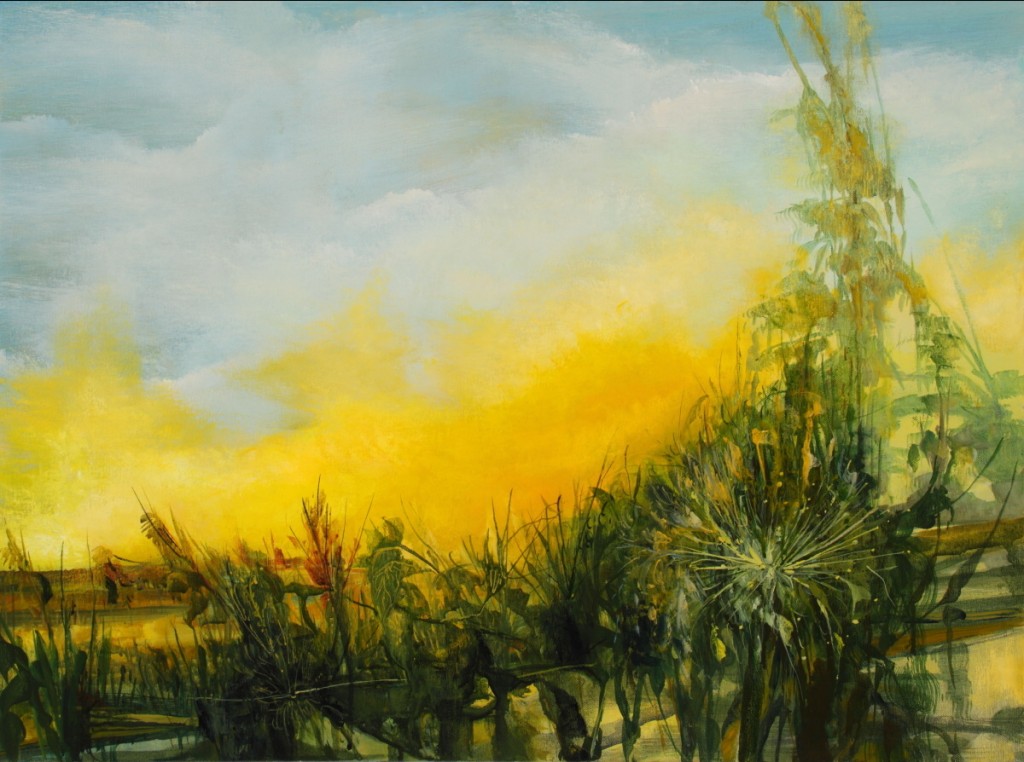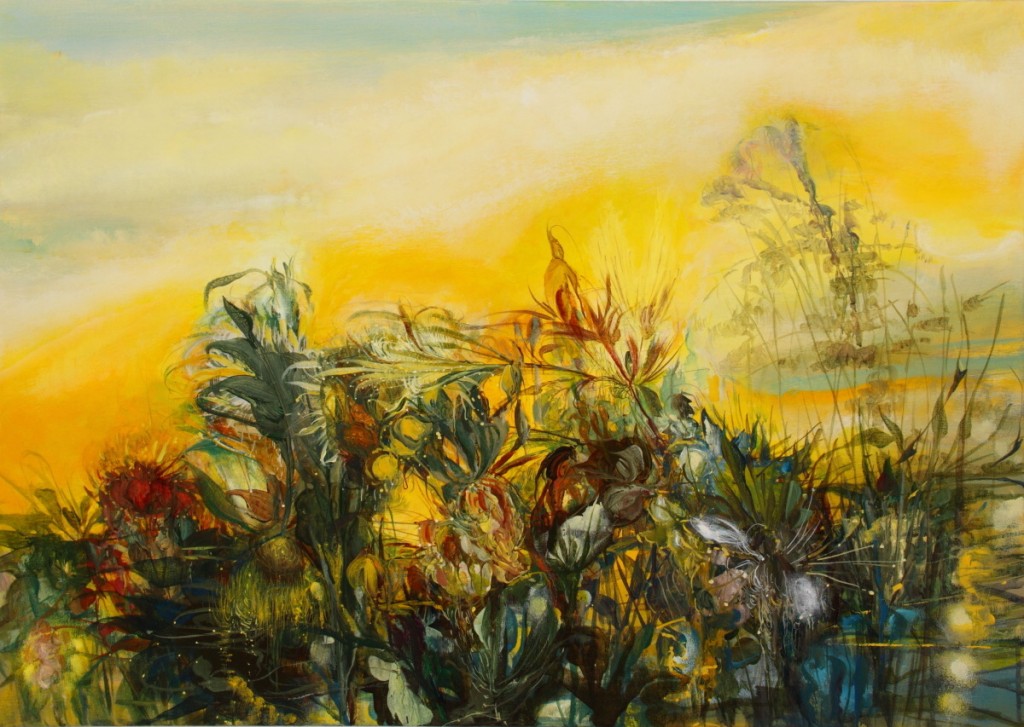
Landscape artist Corrine Colarusso seeks to engage viewers with her wild, colorful landscapes
The Museum of Arts and Sciences will present “The Sunrise Show,” a solo exhibition of paintings by Corrine Colarusso, from October 1 to November 3. Her paintings are described by museum spokesperson Melanie Byas as “detailed and layered in curious ways, radiating with luminous color and wild imagination.”
The paintings represent what the artist called a tributary in her artistic practice. Her most recent solo exhibit was at the Sandler Hudson Gallery in Atlanta in 2011. At that time, she casually referred to the first handful of these paintings as “the sunrise paintings.” That name would stick, and two years later, become the focus of a solo exhibit.
“Sometimes you have this idea that’s like a tributary from the river and you follow that up and sometimes it can turn into a body of work,” explained Colarusso. “I was casually referring to them as ‘the sunrise paintings,’ and later realized they were becoming a substantial body of work.”
“Elementary Geography; The Sunrise,” 2010, 24 x 32, acrylic on canvas.
Colarusso is a full-time studio artist living in the Atlanta area.
“For me, painting is my job. It’s what I do. I get up and I go to the studio and I just simply show up and try to do a good job every day. Sometimes the results are very good. Sometimes they are terrible.”
She said that an artist can’t wait for permission to follow her instincts. “That’s all you have,” she explained.
As an artist, Colarusso views her work as a continuation of the long tradition of landscape painting. Over time, as more people become familiar with her work, she has humble hopes that she will be viewed as having contributed to the genre. Though she is informed by the work of other landscape painters, in practice, she is more grounded in the act of creation than in her work’s historical context.
“When I am really in the thick of painting every single day, without distraction… (I) try to be in the work itself, in the moment, in the process of painting, without standing back and making judgements. You really are just trying to make a good painting.”
“Magic Gold, Full Sun,” 2011, 30 x 42, acrylic on canvas.
Colarusso grew up in Boston. She said that her experience with great works of art in her hometown gave her a sense of what great art could be. Her focus on landscapes began shortly after she moved to Georgia in the mid-1970s, when she made her first trip the the Okefenokee Swamp.
“I was blown away just to see a landscape like that. To be so transported emotionally. Being there paddling in the water, being there out in the swamp. I was just completely transported. It just moved me.”
In the early ’80s, she began to paint landscapes. More than 30 years later, she’s still at it and still traveling to new and exciting places.
“I was up in Vermont. They call Vermont the green mountain and they’re not kidding… They call it the Northeast Kingdom. It just feels kingdom-like. It’s just spectacular in its own way.”
The challenge, she said, is to create work that evokes the “core feeling that we all feel being in front of an expansive space” without being sentimental.
“If you’re not willing to be ironic then the defenses are down… Landscape, of all genres… the potential for that (sentimentality) is really significant.”
In the end, she simply wants to create work that engages the viewer on a personal level. Unlike much of contemporary art, which she said can be more akin to event planning, Colarusso’s work speaks to the power of the singular experience of each viewer.
“Art has always been about having a personal experience, versus you and a thousand other people.”
She urges viewers to engage with her work on a personal level.
“The dimensions of those paintings kind of hold the viewer and create a portal for the viewer. If you’re open to that, you can step through into the domain of the painting.”
For Colarusso, that moment of engagement completes the work.
“(A painting) needs an audience to complete its task.”
The Museum of Arts and Sciences: 4182 Forsyth Rd., Macon; 478-477-3232; www.masmacon.org
Recent Content
-
Artsarticle ·
-
Artsarticle ·
-
Artsarticle ·



